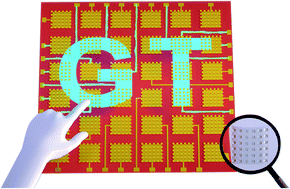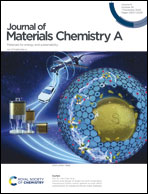A flexible and wide pressure range triboelectric sensor array for real-time pressure detection and distribution mapping†
Abstract
Force distribution measurements are useful for wearable electronic devices designed for monitoring human health and disease diagnosis. However, the measuring pressure of traditional pressure sensors based on conductive materials is only in the kPa range, and therefore they are not conducive to sustain pressures in the MPa range. In this study, a self-powered and flexible pressure sensor array (PSA) was developed for the detection of both magnitude and distribution of pressures around 1.1 MPa generated during mechanical movement. The cuboid-array-structured single-electrode mode triboelectric nanogenerator (C-TENG) showed output voltage signals generated by changes in deformation-induced electrostatic potential. The output voltage of a single C-TENG device varied linearly with the applied pressure. Furthermore, the sensitivity and measuring range of the PSA can be regulated by designing the cuboid-array-structure parameter and adjusting the Young's modulus of silicone rubber (SR) by incorporating dopamine modified BaTiO3 (BT). Dopamine was employed as a modifier of BT nanoparticles to improve the interfacial compatibility between the inorganic filler and SR matrix. In summary, the proposed self-powered PSA with a wide working pressure range and high flexibility looks very promising for the construction of future advanced wearable medical electronic devices.



 Please wait while we load your content...
Please wait while we load your content...